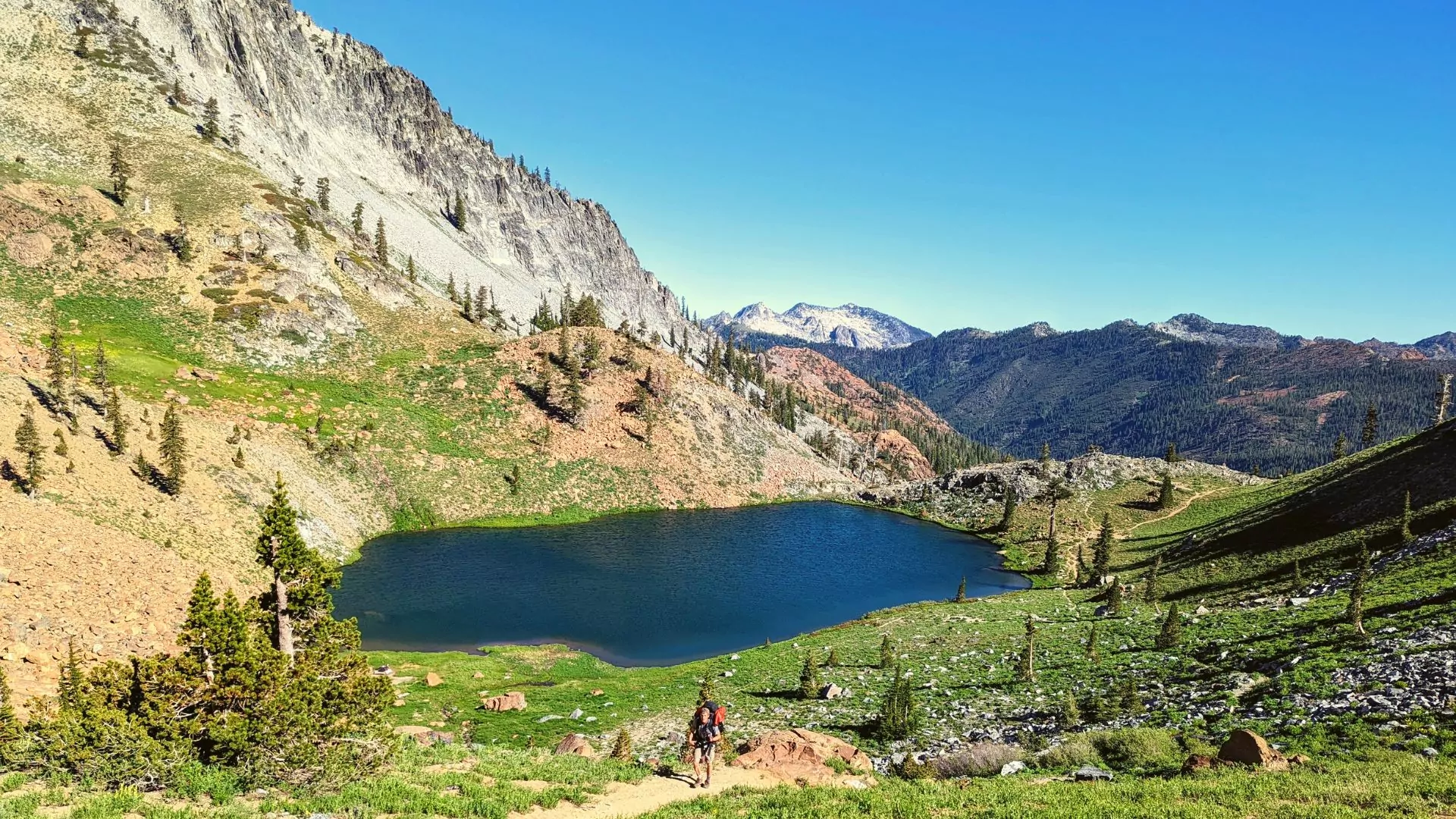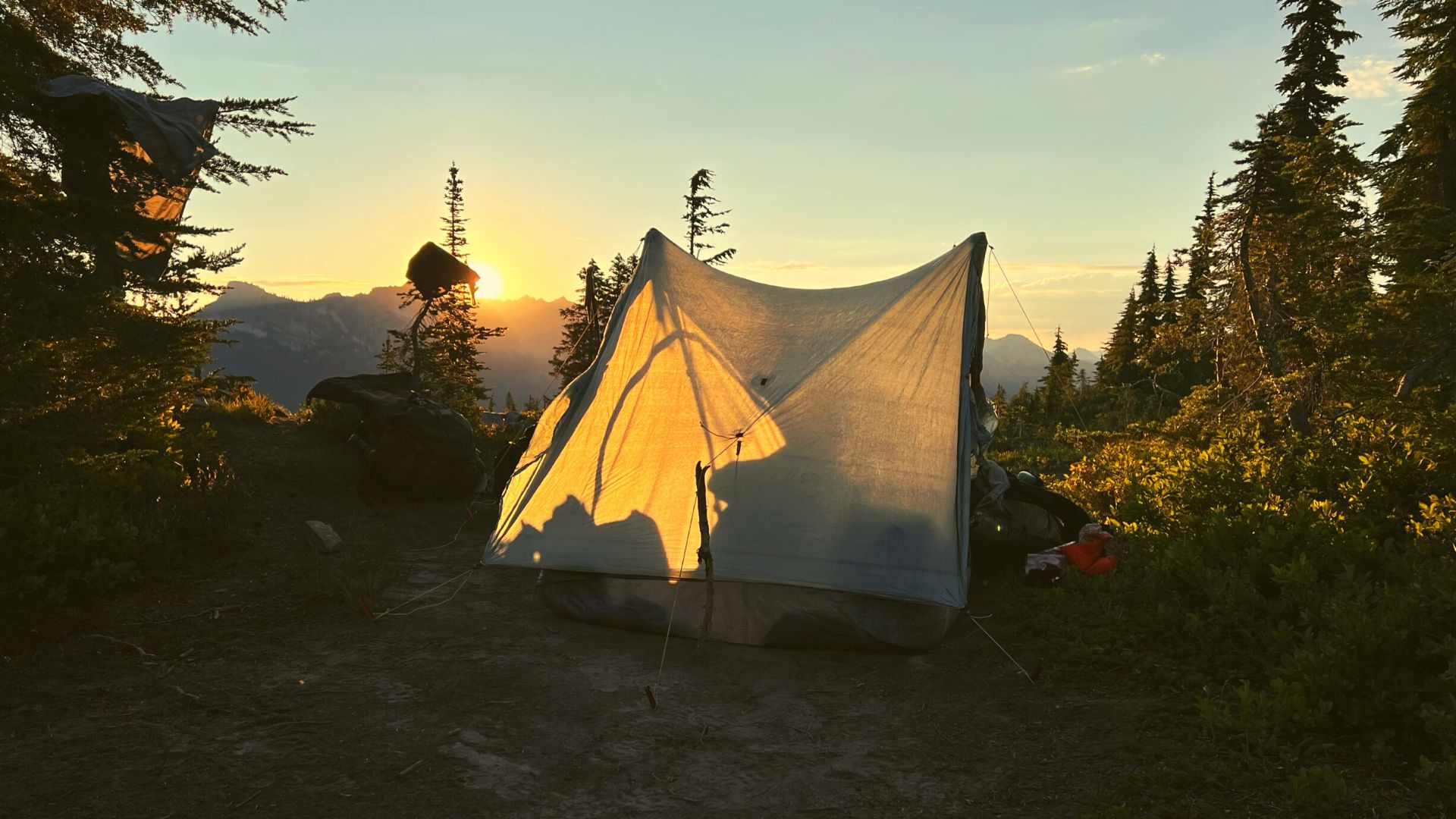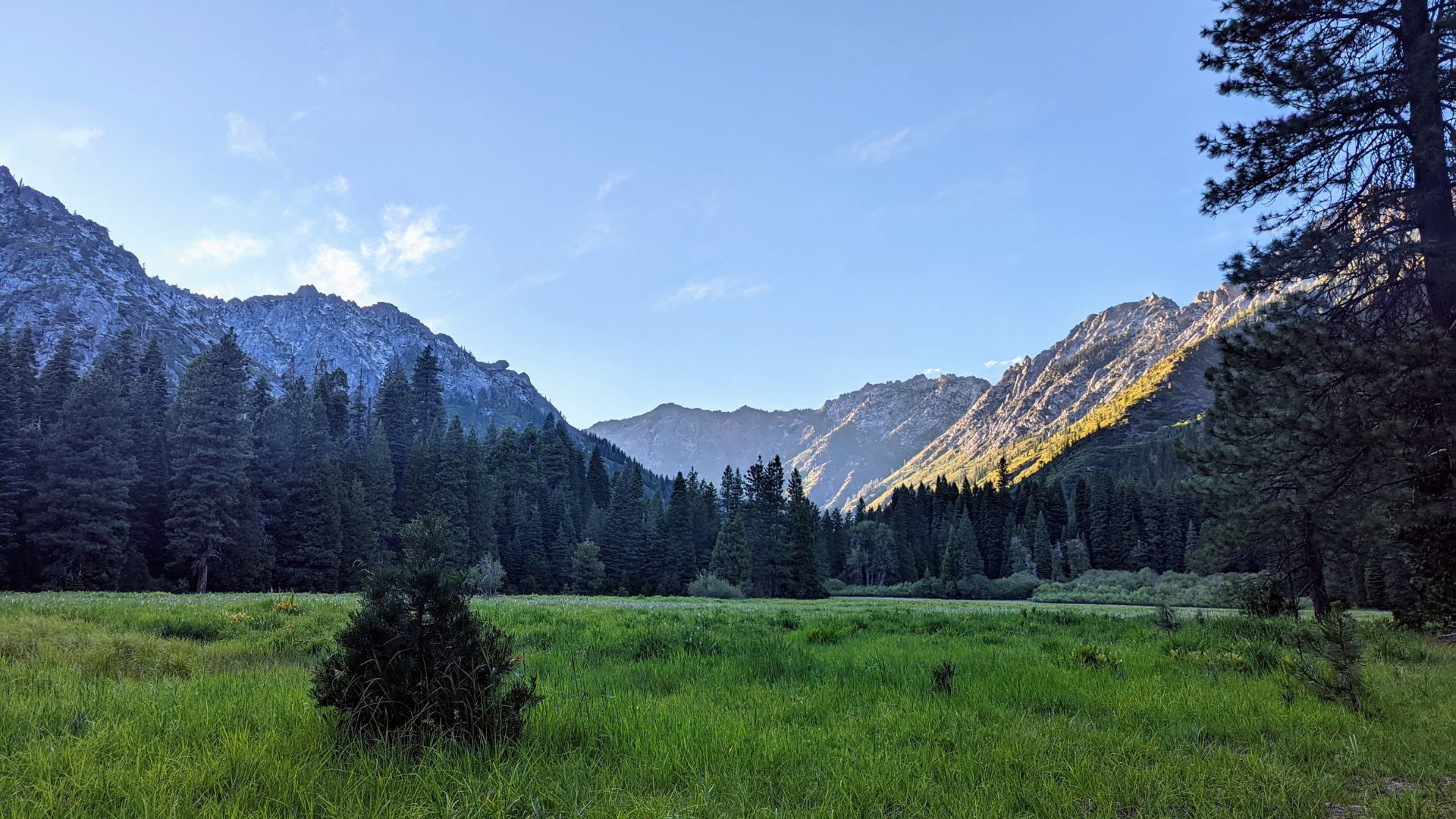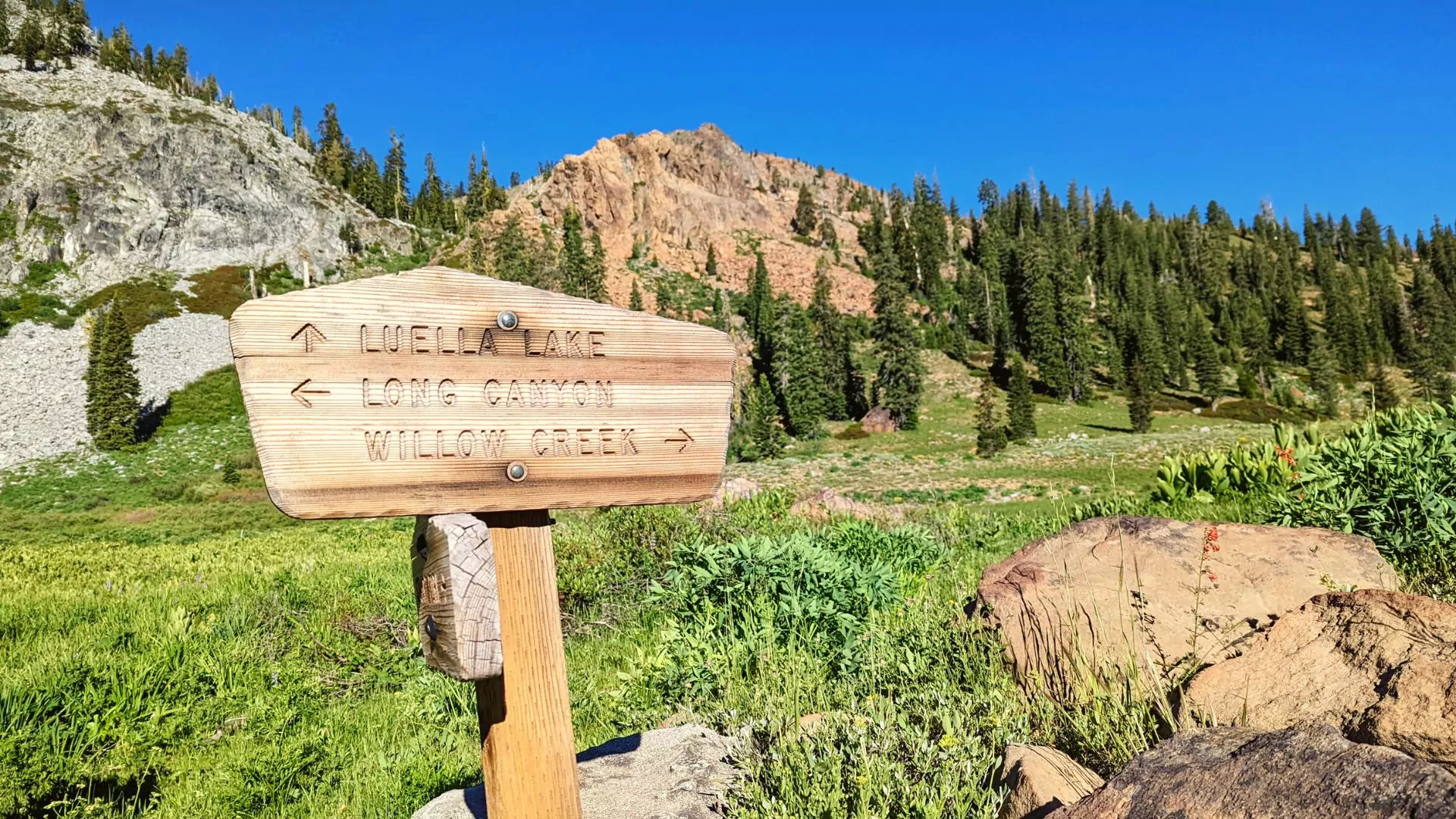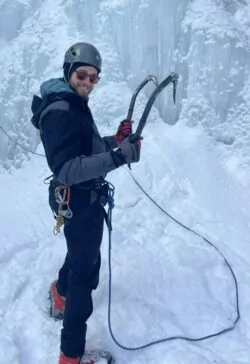Everything you need to know about Trinity Alps backpacking
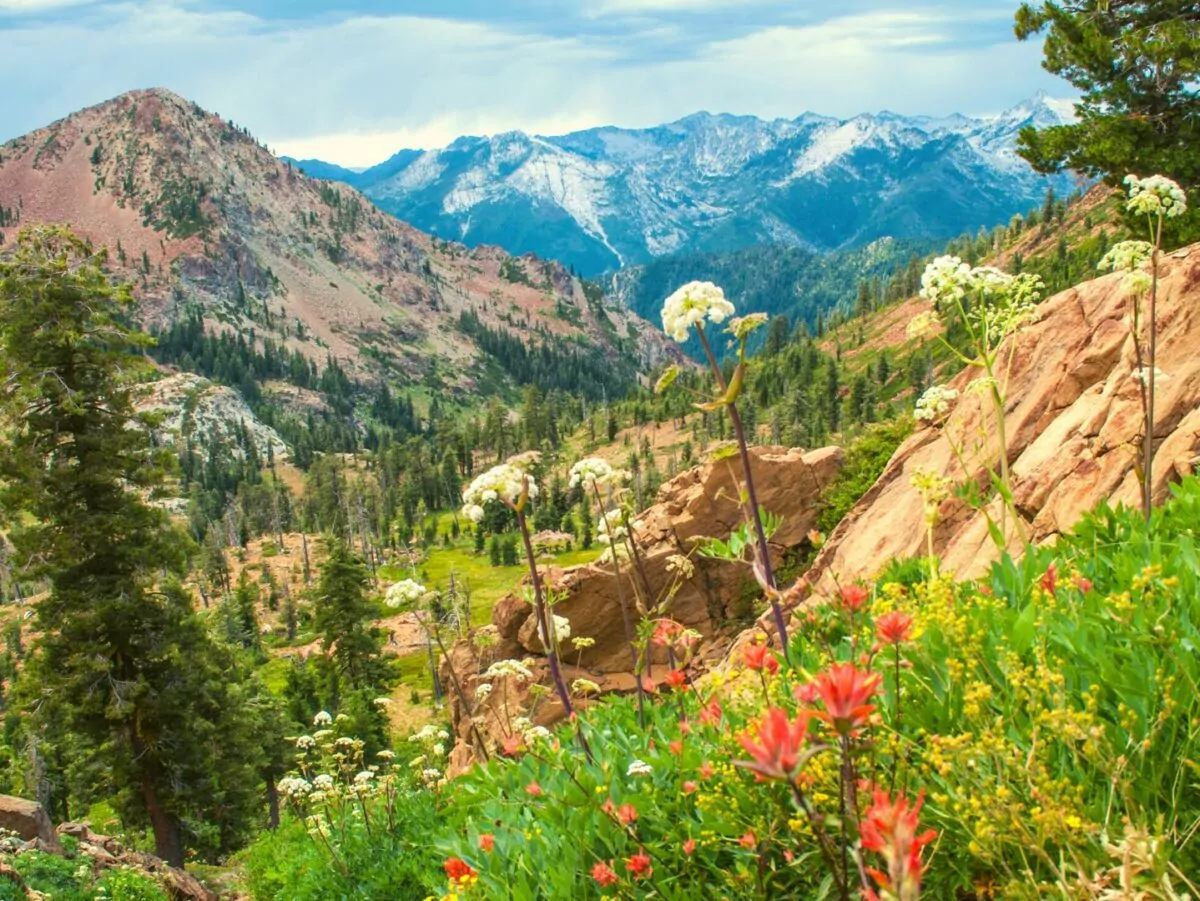
Nestled in the heart of Northern California, the Trinity Alps offer a breathtaking escape for outdoor enthusiasts seeking to immerse themselves in nature’s wonders. With its rugged peaks, pristine lakes, and diverse wildlife, this region has become a haven for hikers seeking unforgettable adventures. In this blog post, we will delve into the beauty of the Trinity Alps, providing essential information on its location, how to get there, permits required, wildlife encounters, potential dangers, and much more!
Why Visit the Trinity Alps
One of the greatest advantages of hiking in the Trinity Alps is the abundance of trail options available. Whether you’re a novice hiker or an experienced mountaineer, there is a trail suited to your skill level and preferences. From gentle, family-friendly hikes along the Trinity River to challenging multi-day backpacking adventures through remote wilderness areas, the Trinity Alps cater to all types of outdoor enthusiasts. Popular trails like the Canyon Creek Lakes Trail and the Stuart Fork Trail offer a variety of landscapes and experiences, ensuring that every hiker finds their perfect match.
For those seeking solitude and a true wilderness experience, the Trinity Alps deliver. With over 500 miles of trails, it’s possible to venture deep into the backcountry and immerse yourself in nature’s embrace. Away from the crowds and noise of civilization, hikers can find solace in the tranquility of the wilderness. The Trinity Alps Wilderness is a sanctuary for wildlife, including black bears, mountain lions, and a variety of bird species, providing opportunities for wildlife sightings and encounters that add to the allure of the area.
Hiking is just one of the many outdoor activities that the Trinity Alps offer. Fishing enthusiasts can cast their lines in the pristine alpine lakes and streams, hoping to catch trout or salmon. Backpackers can set up camp in designated areas and spend nights under a star-studded sky, sharing stories around a crackling campfire. Additionally, the Trinity Alps provide opportunities for rock climbing, horseback riding, and even winter activities like snowshoeing and cross-country skiing, ensuring that outdoor enthusiasts of all interests can find something to enjoy.
When to Visit
Spring (April to June) – As winter bids farewell and nature awakens, spring unveils a vibrant landscape in the Trinity Alps. During this time, wildflowers carpet the meadows, and the snow-capped peaks begin to melt, creating gushing waterfalls and rushing streams. Spring is an ideal time for hiking and backpacking, as the temperatures are mild, ranging from 50°F to 70°F (10°C to 21°C). However, be prepared for occasional rain showers and muddy trails, as the snowmelt can make some paths challenging.
Summer (July to September) – Summer is undoubtedly the peak season for recreation in the Trinity Alps Wilderness. With warm and dry weather, this is the perfect time to explore the vast network of trails and conquer the majestic peaks. The temperatures range from 70°F to 90°F (21°C to 32°C), making it comfortable for extended hikes and overnight camping. The crystal-clear lakes invite swimmers and anglers to cool off and enjoy the tranquility of their surroundings. It’s worth noting that summer can be crowded, so plan your trip in advance and consider weekdays for a quieter experience.
Fall (October to November) – As summer fades away, the Trinity Alps Wilderness transforms into a breathtaking display of autumn colors. The golden hues of aspen and maple trees create a picturesque backdrop for your outdoor adventures. Fall offers cooler temperatures, ranging from 40°F to 70°F (4°C to 21°C), making it an excellent time for hiking and backpacking. The trails are less crowded compared to summer, allowing you to immerse yourself in the serenity of nature. However, be prepared for shorter daylight hours and potential early snowfall at higher elevations.
Winter (December to March) – Winter in the Trinity Alps Wilderness is a magical time for those seeking solitude and a unique outdoor experience. The snow-covered peaks and frozen lakes create a serene and peaceful atmosphere. However, winter recreation in this wilderness area requires advanced skills and proper equipment, as the weather can be harsh and unpredictable. Backcountry skiing, snowshoeing, and winter camping are popular activities for experienced adventurers. It’s crucial to check weather conditions and avalanche risks before embarking on any winter excursions.
Location, Geography, and Natural History
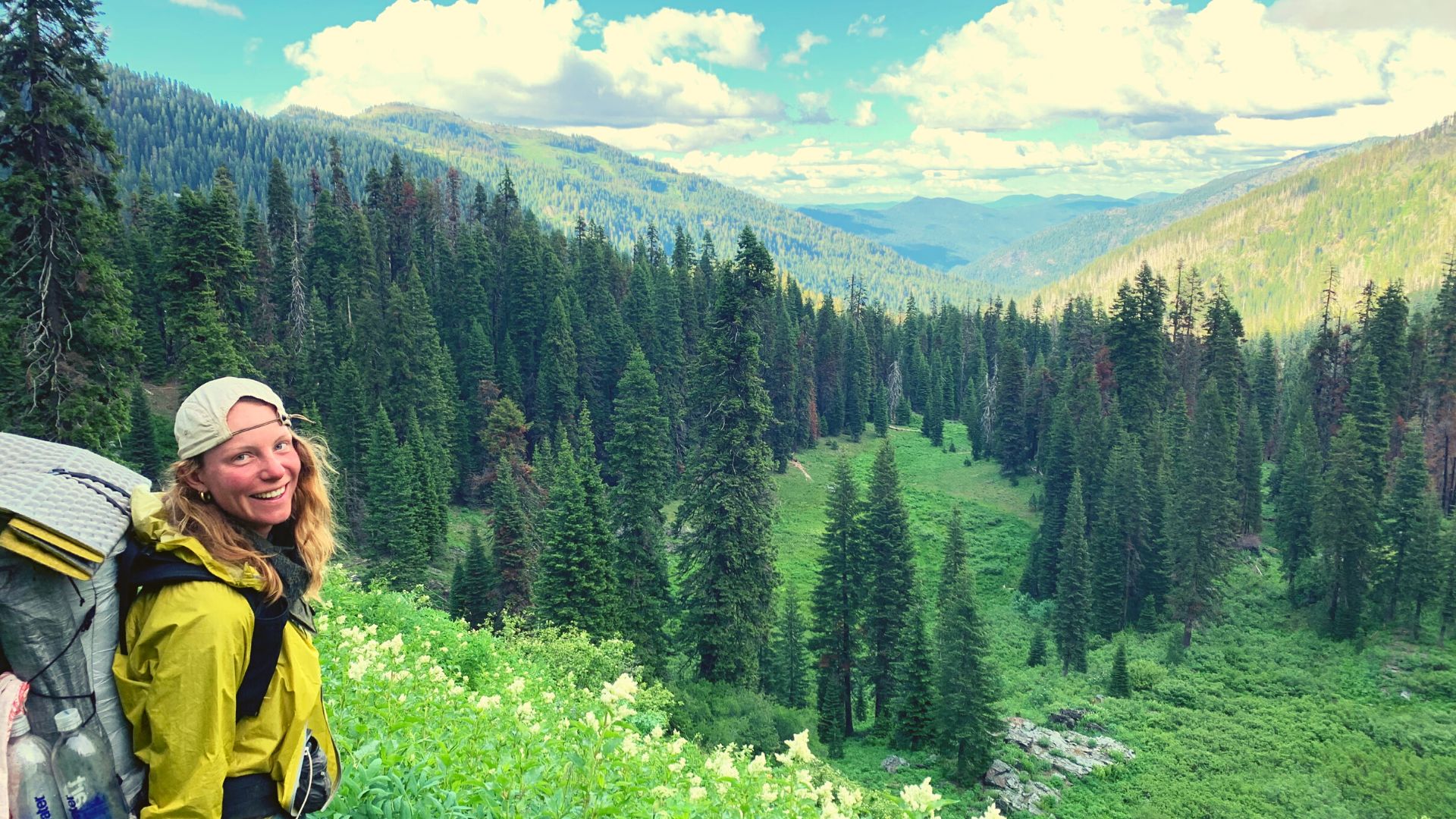 The Trinity Alps are situated in the Trinity County of California, encompassing parts of the Shasta-Trinity and Klamath National Forests. This remote and rugged mountain range is located approximately 50 miles west of Redding and 60 miles north of Weaverville. Its relative seclusion adds to the allure, attracting those seeking untouched wilderness.
The Trinity Alps are situated in the Trinity County of California, encompassing parts of the Shasta-Trinity and Klamath National Forests. This remote and rugged mountain range is located approximately 50 miles west of Redding and 60 miles north of Weaverville. Its relative seclusion adds to the allure, attracting those seeking untouched wilderness.
The Trinity Alps boast a diverse and captivating geography that leaves visitors in awe. Towering granite peaks, deep canyons, pristine alpine lakes, and cascading waterfalls define this majestic landscape. The highest point in the range is Thompson Peak, standing proudly at 9,002 feet, offering breathtaking panoramic views of the surrounding wilderness.
The area is crisscrossed by an extensive network of trails, allowing hikers and backpackers to explore its hidden treasures. The Pacific Crest Trail, a renowned long-distance hiking trail, traverses the Trinity Alps, providing an unforgettable experience for outdoor enthusiasts.
The Trinity Alps are not only a visual spectacle but also a haven for natural history enthusiasts. The region’s diverse ecosystems support a wide array of plant and animal species, making it a biodiversity hotspot. From ancient forests of towering Douglas firs and majestic Ponderosa pines to vibrant wildflower meadows, the flora of the Trinity Alps is a sight to behold.
Wildlife thrives in this pristine environment, with sightings of black bears, mountain lions, deer, and a variety of bird species being common. The Trinity River, which flows through the region, is renowned for its salmon and steelhead runs, attracting anglers from far and wide.
The Trinity Alps also hold cultural significance for Native American tribes, who have inhabited the area for thousands of years. The land is rich with their history, stories, and sacred sites, adding a layer of cultural depth to the natural wonders.
Ways into the Wilderness
Reaching the Trinity Alps requires some planning, as it is located in a remote area. The most common access point is via the town of Weaverville, which serves as a gateway to the wilderness. From Weaverville, take Highway 3 north for approximately 16 miles until you reach the turnoff for Trinity Alps Wilderness. Depending on the style of your adventure you may choose to access the Trinity Alps Wilderness with one of the following methods:
Day Hiking – One of the most popular ways to get into the Trinity Alps Wilderness is through its extensive network of hiking trails. These trails offer a range of difficulty levels, catering to both novice and experienced hikers. Some notable trailheads include the Canyon Creek Trailhead, Stuart Fork Trailhead, and the Swift Creek Trailhead. Each trail provides unique scenery and opportunities to explore the wilderness.
Backpacking – For those seeking a more immersive experience, backpacking in the Trinity Alps Wilderness is an excellent option. With numerous backcountry campsites and miles of trails, backpackers can spend days or even weeks exploring the vast wilderness. Permits are required for overnight stays, ensuring the preservation of this pristine environment. These areas are accessed from the same trail for day hiking use.
Backpack the Trinity Alps with WIldlaND TREKKING
Horseback Riding – Another exciting way to access the Trinity Alps Wilderness is through horseback riding. This allows you to traverse the rugged terrain while enjoying the company of these majestic animals. Horseback riding provides a unique perspective and allows you to cover more ground than traditional hiking.
Rafting and Kayaking – If you prefer water-based adventures, the Trinity River offers an exhilarating route to the wilderness. Rafting or kayaking down the Trinity River allows you to witness stunning landscapes and access remote areas that are otherwise difficult to reach. It is important to note that these activities require experience and proper equipment due to the river’s varying levels of difficulty.
Air Access – For those seeking a quicker and more scenic route, air access is available to the Trinity Alps Wilderness. Several small airports in the region offer charter flights or helicopter services, providing a bird’s-eye view of the stunning landscape. This option is ideal for those with less time or more physical limitations.
Permit Requirements
Recreating in the Trinity Alps Wilderness offers a breathtaking experience for outdoor enthusiasts. However, it’s important to be aware of the permits required to ensure a safe and enjoyable adventure. Here, we will detail the permits necessary for various recreational activities in the Trinity Alps Wilderness.
Wilderness Permit – To access and explore the Trinity Alps Wilderness, visitors must obtain a wilderness permit. This permit is essential for all overnight trips and can be obtained from the Weaverville Ranger Station or the Trinity Alps Wilderness website. It is recommended to secure your permit well in advance, especially during peak seasons, as there are limited permits available.
Campfire Permit – If you plan to have a campfire during your stay in the Trinity Alps Wilderness, you will need a valid campfire permit. This permit is free and can be obtained online through the California Department of Forestry and Fire Protection (CAL FIRE) website. It is crucial to follow all fire safety regulations and guidelines to prevent wildfires and protect the wilderness.
Fishing License – Anglers looking to cast their lines in the Trinity Alps Wilderness must possess a valid California fishing license. Whether you’re fishing in the rivers, lakes, or streams within the wilderness area, a fishing license is required for anyone aged 16 or older. Licenses can be purchased online through the California Department of Fish and Wildlife website or from authorized vendors.
Special Use Permits – Certain activities within the Trinity Alps Wilderness may require special use permits. These permits are necessary for activities such as commercial filming, group events, or organized gatherings. If you plan to engage in any of these activities, it is essential to contact the Weaverville Ranger Station or visit the Trinity Alps Wilderness website to inquire about the specific permits required.
Stock Use Permits – If you plan to explore the Trinity Alps Wilderness with horses or pack animals, a stock use permit is mandatory. These permits ensure the responsible use of the wilderness area and help protect its fragile ecosystems. Contact the Weaverville Ranger Station for more information on obtaining a stock use permit and to learn about any additional regulations or guidelines for traveling with stock animals.
Wildlife
The Trinity Alps are renowned for their diverse wildlife. This section provides an overview of the wildlife you may encounter in this region, as well as potential dangers that visitors should be aware of for a safe and enjoyable experience.
Mammals – The Trinity Alps are home to a variety of mammal species. Visitors may come across black bears, mountain lions, bobcats, and coyotes. While these animals generally avoid human contact, it is important to exercise caution and follow proper safety guidelines when encountering them. Keep a safe distance, avoid surprising them, and never feed or approach wild animals.
Birds – The Trinity Alps offer a haven for birdwatchers, with over 200 species of birds recorded in the area. From majestic bald eagles to colorful songbirds, bird enthusiasts will have plenty to admire. Remember to maintain a respectful distance and avoid disturbing nesting areas during breeding seasons.
Reptiles and Amphibians – The Trinity Alps are also home to various reptiles and amphibians. Rattlesnakes, including the Northern Pacific rattlesnake, are present in the region. Be cautious when hiking or climbing, watch your step, and listen for their distinctive rattle. It is advisable to wear sturdy footwear and stay on designated trails to minimize the risk of snake encounters.
Insects and Arachnids – As with any wilderness area, the Trinity Alps have their share of insects and arachnids. Mosquitoes, ticks, and spiders are common. To protect yourself from bites and potential diseases, wear long sleeves, use insect repellent, and perform regular tick checks after outdoor activities.
Plant Life – While not wildlife in the traditional sense, the plant life in the Trinity Alps is worth mentioning. The region boasts a rich diversity of flora, including wildflowers, coniferous forests, and alpine meadows. However, some plants, such as poison oak, can cause skin irritation. Learn to identify these plants and avoid direct contact.
Know Before you Go
Recreating in the Trinity Alps Wilderness offers a chance to experience the beauty of nature, but it is important to be aware of the potential dangers that come with it. By understanding and respecting the challenges posed by the terrain, weather, wildlife, communication limitations, and lack of facilities, visitors can ensure a safe and enjoyable adventure. Remember to plan ahead, be prepared, and prioritize safety to make the most of your time in this remarkable wilderness area. Some dangers to be aware of are:
Challenging Terrain – The Trinity Alps Wilderness is known for its rugged and challenging terrain. Hikers and backpackers should be prepared for steep ascents, uneven trails, and potentially treacherous conditions. It is crucial to have proper footwear, navigation tools, and a good understanding of the route before embarking on any adventure. Ignoring these factors can lead to accidents, injuries, or even getting lost.
Extreme Weather Conditions – The weather in the Trinity Alps Wilderness can be unpredictable and change rapidly. Visitors should be prepared for sudden temperature drops, heavy rain, snowfall, or intense heat. It is essential to check weather forecasts before heading out and pack appropriate clothing and gear to stay safe and comfortable. Failure to do so can result in hypothermia, heatstroke, or other weather-related emergencies.
Wildlife Encounters – The Trinity Alps Wilderness is home to a variety of wildlife, including black bears, mountain lions, and rattlesnakes. While these encounters are rare, it is important to be knowledgeable about wildlife behavior and take necessary precautions. Store food properly, make noise while hiking to avoid surprising animals, and carry bear spray or other deterrents for self-defense. Respecting wildlife and their habitats is crucial for both their safety and yours.
Limited Cell Phone Reception – One of the charms of the Trinity Alps Wilderness is its remote and untouched nature. However, this also means that cell phone reception is often limited or non-existent in many areas. It is essential to inform someone about your plans, including your expected return time, and carry a map, compass, or GPS device for navigation. In case of an emergency, having alternative communication methods or a satellite phone can be a lifesaver.
Lack of Facilities and Services – The Trinity Alps Wilderness is a designated wilderness area, which means it lacks amenities such as restrooms, potable water sources, or medical facilities. Visitors should be self-sufficient and carry enough water, food, and first aid supplies for their entire trip. Proper waste disposal is crucial to preserve the pristine environment, so pack out all trash and follow Leave No Trace principles.
Happy Hiking
Hiking in the Trinity Alps is an experience that will leave you in awe of nature’s grandeur. From the breathtaking vistas to the tranquil lakes, this wilderness offers a sanctuary for those seeking solace in the great outdoors. Remember to plan your trip carefully, obtain the necessary permits, and be mindful of the potential dangers. By respecting the wilderness and its inhabitants, you can embark on an unforgettable journey through the Trinity Alps, creating memories that will last a lifetime.



